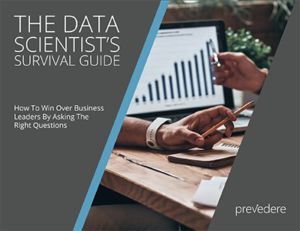Last Updated: January 22, 2021
The holiday season is among the most stressful, and most profitable, periods retailers will face all year.
During the 2018 holiday retail season, shoppers are expected to spend up to $640 per person on holiday gifts and contribute more than $720 billion in total holiday retail sales, according to the National Retail Federation.
Months and months of planning go into making the holiday retail season a success. Decisions made over the summer about inventory, personnel, and promotions all add up, as the holiday season can represent as much as 30 percent of annual sales for some retailers.
Fortunately, a wealth of holiday data has made planning for the hectic season easier, if companies have the resources and knowledge to use it.
Identifying the Right Holiday Data
 Most companies are awash with data. The real challenge lies in finding what types of data can be leveraged to make smarter decisions.
Most companies are awash with data. The real challenge lies in finding what types of data can be leveraged to make smarter decisions.
Here are three key steps retail holiday data professionals should make to help executives, marketing and product teams prepare effectively for the next busy holiday season.
1. Align with executives to gain a big-picture understanding of past performance.
Data teams need to align with business leaders to understand the internal viewpoints and decisions that drove past results. To do that, they need to ask key questions.
For example, how did last year’s holiday sales compare to previous years’? What channels saw the biggest growth? Were there any spikes in performance? What role did promotions have? What macroeconomic factors may have been at play?
Answers to these questions and others will help retail holiday data teams gain awareness of the company’s view of the world and KPIs for success.
2. Determine if the data available is clean, complete and compelling.
Many retailers struggle with identifying, formatting and preparing data before analysis can begin. Legacy corporate infrastructure and POS systems may mean data is hard to gather, collected inconsistently or stored in the wrong format.
If data is not clean or complete, it may not be very compelling. It may take hours of work to get the data in a place where it can be comfortably used. Before mining and cleaning begin, retail analytics teams should determine whether data has the potential to provide useful, forward-looking insights about holiday retail performance.
If it is not compelling, it may be ignored.
3. Determine the unique external leading indicators that will drive success.
All too often, retailers over-rely on analysis of historical data when forming their holiday strategies and forecasts. Analysis of past performance is certainly valuable, but it cannot stop there. Retailers need to take a more holistic view of the external forces that shape consumer behavior.
Global economic trends and consumer preferences, for example, often track with business outcomes as leading indicators that can be used to predict future performance. Each market’s leading indicators vary, so it may take some examination to determine which ones most directly correlate.
Fortunately, tools like Prevedere’s Prevedere predictive analytics cloud can greatly speed up this process for faster, more accurate analysis. By including external indicators in their planning and forecasting process, retailers can better prepare for the holiday season.
 To get the most out of your retail data, download The Data Scientist’s Survival Guide from Prevedere with insights into how data leaders can ask the right questions to drive tangible business results.
To get the most out of your retail data, download The Data Scientist’s Survival Guide from Prevedere with insights into how data leaders can ask the right questions to drive tangible business results.
 Prevedere has been acquired by enterprise planning leader Board.
Prevedere has been acquired by enterprise planning leader Board.